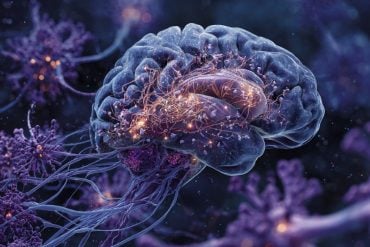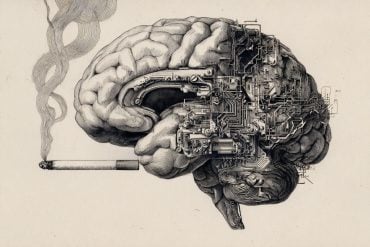Summary: A large new study finds that epileptic seizures are significantly more common in patients with frontotemporal dementia (FTD) than previously believed. In some cases, seizures occurred up to 10 years before an FTD diagnosis, highlighting a potentially overlooked early symptom.
The researchers analyzed over 12,000 medical records and found that epilepsy was more frequent in FTD patients compared to those with Alzheimer’s or healthy controls. These findings suggest that better screening for epilepsy in FTD could improve diagnosis, treatment, and quality of life.
Key Facts:
- Hidden Early Sign: Epileptic seizures can occur up to a decade before FTD diagnosis.
- Higher Risk: FTD patients had significantly higher rates of epilepsy than those with Alzheimer’s.
- Treatment Opportunity: Recognizing seizures may improve function and life quality in FTD patients.
Source: University of Eastern Finland
According to a recent study, in patients with frontotemporal dementia (FTD), epileptic seizures are significantly more common than previously known.
The discovery deepens understanding of the symptoms of this memory disorder and emphasises the importance of taking epileptic seizures into account in the treatment and monitoring of patients.

Coordinated by Neurocenter Finland, this major project by the University of Eastern Finland and the University of Oulu examined the prevalence of epilepsy in patients with FTD.
The research dataset is one of the largest in the world, and the results have been published in the prestigious JAMA Neurology journal.
Epilepsy occurred years before the FTD diagnosis
Epilepsy is known to be associated with Alzheimer’s disease, for example, but data on the on the connection between FTD and epilepsy remains scarce. The newly published study fills this information gap and shows that epilepsy is considerably more common in patients with FTD than previously estimated.
The study analysed patient data from the university hospitals of Kuopio and Oulu from the period 2010–2021. Out of a total of 12,490 medical records, the study identified 245 patients with FTD and 1,326 patients with Alzheimer’s disease. In addition to examining the prevalence of epilepsy in these patients, the prevalence was also examined in healthy controls.
“Our results show that epilepsy is considerably more common among those with FTD than those with Alzheimer’s disease or in healthy controls,” says Doctoral Researcher Annemari Kilpeläinen, the first author of the research article and a medical specialist in neurology.
“It is noteworthy that epilepsy occurred in some patients with FTD already ten years before their dementia diagnosis, and it was more common in all the examined stages of the disease than previous international studies have reported.”
The prevalence of epilepsy was assessed at several time points from ten years before to five years after the dementia diagnosis. In patients with FTD, the prevalence of epilepsy increased over time, and five years after the diagnosis approximately 11% had epilepsy. In addition to epilepsy diagnoses, medications used for epilepsy were more common in patients with FTD, which strengthens the reliability of the results.
Epilepsy might be left undiagnosed
Diagnosing epilepsy in patients with FTD may be challenging as the symptoms of the disease may resemble epileptic seizures. This may lead to underdiagnosis and delays in treatment. However, untreated epilepsy can significantly worsen patients’ condition.
“Identifying epilepsy is important because its treatment can improve patients’ functional capacity and quality of life. Knowledge about the association between epilepsy and FTD raises new research questions: do these diseases share some pathophysiological mechanisms and could some FTD symptoms be caused by alterations in the specific electrical systems of the brain”, says the project’s principal investigator, Associate Professor and Director of UEF Brain Research Unit Eino Solje.
An extensive research project brings together different fields of science
The recently published study is part of an extensive project that combines exceptionally extensive real-life patient data with different kinds of unique registers.
The project involves a strong cooperation between the University of Oulu and the University of Eastern Finland as well as different fields of science, including between researchers in the fields of medicine and law. Kuopio University Hospital and Oulu University Hospital are part of the international European Reference Network EpiCARE and recognised centres in the field of epilepsy treatment and research.
About this epilepsy and FTD research news
Author: Maj Vuorre
Source: University of Eastern Finland
Contact: Maj Vuorre – University of Eastern Finland
Image: The image is credited to Neuroscience News
Original Research: Closed access.
“Prevalence of Epilepsy in Frontotemporal Dementia and Timing of Dementia Diagnosis” by Annemari Kilpeläinen et al. JAMA Neurology
Abstract
Prevalence of Epilepsy in Frontotemporal Dementia and Timing of Dementia Diagnosis
Importance
Previous studies have described a potential association between epilepsy and frontotemporal dementia (FTD), but no systematic data are available.
Objective
To determine whether epilepsy is more prevalent in patients with FTD than in healthy controls (HCs) or patients with Alzheimer disease (AD).
Design, Setting, and Participants
In this case-control study, we compared the prevalence of epilepsy and purchases of antiseizure medicines (ASMs) among patients with FTD, matched HCs, and patients with AD from 2 early-onset dementia diagnostics centers in the same geographic regions of Finland. AD or FTD diagnoses were made between January 1, 2010, and December 31, 2021. Data were analyzed from January 26, 2024, to January 16, 2025.
Main Outcomes and Measures
The primary outcome was to describe the prevalence of epilepsy in patients with FTD, covering the time period from 10 years before to 5 years after the FTD diagnosis. We used International Statistical Classification of Diseases, Tenth Revision codes to identify all patients with epilepsy and tracked purchases of ASMs.
Results
The study cohort included 245 patients with FTD (121 female [49.4%], 124 male [50.6%]; mean [SD] age, 65.2 [8.7] years), 2416 matched HCs (1190 female [49.3%], 1226 male [50.7%]; mean [SD] age, 65.0 [8.5] years), and 1326 patients with AD (777 female [58.6%], 549 male [41.4%]; mean [SD] age, 71.7 [9.8] years).
The prevalence of epilepsy was higher in the FTD group compared with the HC group (3.3% vs 0.8%, respectively; P = .002) and AD group (3.3% vs 1.4%, respectively; P = .01) 10 years before FTD diagnosis.
At the year of the diagnosis, the prevalence was 6.5% in patients with FTD, 1.8% in HCs (FTD vs HC difference, 4.7 percentage points [ppt] [95% CI, 2.2-8.6 ppt]; P < .001), and 5.0% in patients with AD (FTD vs AD difference, 1.6 ppt [95% CI, −1.2 to 5.5 ppt]; P = .32); at 5 years after the diagnosis, the prevalence was 11.2% in patients with FTD, 2.2% in HCs (FTD vs HC difference, 9.0 ppt [95% CI, 5.0-14.6 ppt]; P < .001), and 6.9% in patients with AD (FTD vs AD difference, 4.2 ppt [95% CI, 0-10.0 ppt]; P = .05).
ASM purchases were made significantly more often among patients with FTD (10.2%) compared with HCs (1.8%) and patients with AD (4.2%) (FTD vs HC difference, 8.4 ppt [95% CI, 5.2-12.9 ppt]; P < .001; FTD vs AD difference, 6.1 ppt [95% CI, 2.6-10.6 ppt]; P < .001) at all time points and increased during the study period.
Conclusions and Relevance
This case-control study found a higher prevalence of epilepsy and increased ASM use among patients with FTD compared with HCs and patients with AD , suggesting an association between epileptic abnormalities and the pathophysiology of FTD. Further studies are warranted to investigate a potential overlap in the pathophysiologic mechanisms of epilepsy and FTD.






